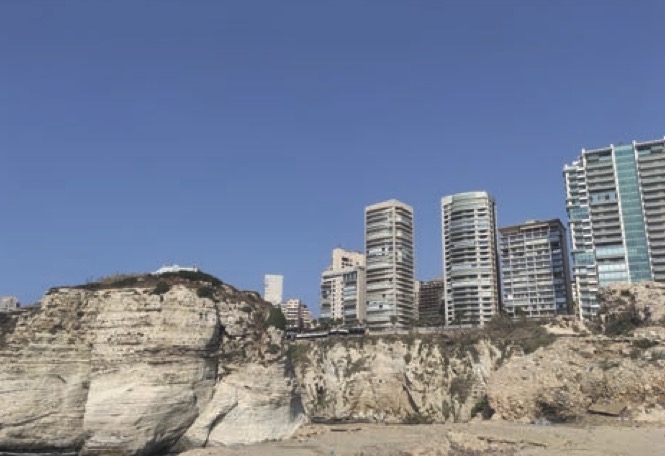Libano
Publish date 16-01-2021
 The first impact with Lebanon: between amazement and fascination for complexity.
The first impact with Lebanon: between amazement and fascination for complexity.
While crossing the sparkling Rafik Hariri airport, before passing through customs, the images of a flourishing and colorful Lebanon flow by me like in a museum. Beautiful natural landscapes from which the famous cedars stand out, symbol of the country. The flight was so relaxing that I almost forgot where it was taking me. A stamp in the passport, and here I am finally in Beirut.
The imagination quickly gives way to reality. The city looks like an anthill teeming with antennas, electrical cables and garbage. The trees emerge from the concrete and occupy the sidewalks along with the parked cars. I find myself catapulted into an urban chaos without criteria, in which public space is not contemplated. The rare pedestrians are besieged by taxi drivers and move hastily, slalom between cars and mopeds, waiting to reach the nearest bar, shop or mall.
The taxi driver who takes me to the hospital to swab is kind but taciturn. When it finally opens up a bit (in English, which he speaks perfectly), we joke about the traffic in Beirut, then of course we talk about Covid-19 and the situation in Italy and Lebanon. Here there are on average 1400 cases per day, which is a lot compared to a population of six million inhabitants. People on the street are afraid and a mask is mandatory. I try to lighten the conversation by talking about the contrast between the buildings. In fact, the juxtaposition of ancient houses, often in ruins, but whose large arcades evoke an ancient splendor, is immediately striking, surrounded by modern and impressive skyscrapers. He points out some houses, but they are not worn out by time but by the recent explosion. "You heard the news on television, but I saw it." He tells me that his previous car fell apart and two friends lost their lives: "I still see the blood of people on the street, I still feel the explosion in my head." I don't see his expression from behind the mask, but his eyes are tinged. I am silent. Faced with the suffering of those who have lost almost everything, what remains to be said?
I have to admit it. The first impact with Lebanon, in a time of pandemic and a restart after the Beirut explosion, leaves little room for poetry, beauty and positivity, but rather risks crushing me in a sense of mute and helpless amazement. What remains to be said? Where to find beauty and motivation to live here, if the first to want to leave are the inhabitants themselves?
But the luck of moving to a new country is being able to go beyond the first impact and look at the bottom of things. I sense that the charm of Lebanon is not found in the great landscapes, in the majestic and unforgettable places. But it lies precisely in the people, and in the historical, political and social complexity. The Lebanese carry on their shoulders the weight of the occupation of Western powers, the collapse of the currency and the financial crisis, the fall of the government driven out by street protests due to endemic corruption, the endless war with Israel, sectarianism which later resulted in civil war, the complicated coexistence between religious beliefs, the arrival and settlement of Palestinian refugees first, and Syrians later. A geographically large country like Abruzzo seems to concentrate in itself the most shabby and contradictory pieces of the contemporary world. Therefore, everything still remains to be said: trying to understand this country and its history means putting together the various pieces and perhaps identifying new ways, new points of view still unexplored, and perhaps new ideas to start over.
Anna Galvagno
NP November 2020







